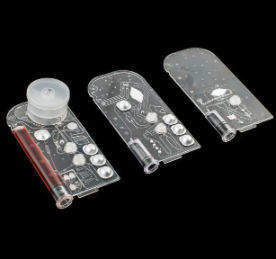
Many medical device OEMs view micromoulding practitioners as manufacturers. While this is in itself self-evident, micromoulders should also be seen as consultants. Those micromoulding experts, which are truly vertically integrated with all stages of the product development process under one roof, have expertise in design, tooling, moulding, validation and automated assembly. This gives them the ability pool this expertise and the best time to do this is at the conceptual design stage of any product development programme. As manufacturers begin to conceive a micromoulding project, it is important to bear in mind some key issues from the start.
Important issues in a micromoulding project
Every project should start with the end in mind. Medical device OEMs need to understand the basic design approach and bottom out what can, and cannot be done, because the smallest design change can be catastrophic and completely derail a project. By way of example, if a medical device manufacturer is considering an application with a 0.005in wall thickness, a 5%-dimension change can be the difference between whether a part will fit or not. A material change can also have a profound effect on a part with this level of detail. Any design engineer will be used to considering stack tolerances and stack dimensions, but when parts get smaller and smaller, the amount of change becomes more of a limiting factor.
So, design for manufacture (DFM) is a fundamental consideration when micromoulding. In fact, it should be more specific and be considered in terms of design for micromanufacturing (DFMM), as the rules of the game are so different when designing miniature parts or parts with very precise elements and tight tolerances. Design engineers have all the computer power and expertise to create the most astoundingly innovative products on screen, but they can be utterly impossible to make. Sometimes the reason for this is simple to deduce, other times less so. Size is often part of the problem.
It is possible to nuance aspects of a design on screen, maybe adding functionality at the scale of fractions of an inch or a few microns. Theoretically, this can be the difference between perfectly optimised design or a slightly better than average design, but it may be impossible to mould. Any design at the microscale requires careful attention to what might otherwise not be a big deal for larger parts.
What constitutes a micromoulded part?
Typically, if one is looking to manufacture a part or component that weighs less than a gram, they are micromoulding. However, it’s one thing to mould something small, and it’s another to mould it efficiently and precisely in a repeatable fashion. Micromoulding must be capable of producing thousands, millions, even billions of parts with the same precision. General guidelines for design engineers to consider are as follows: thin wall sections need to be 0.004in or thicker and there needs to be a particular focus on thick to thin-wall transitions, as well as on wall thickness uniformity; feature aspect ratios around 6:1 (although this is highly material dependent) is a good yard stick, gates can get as small as 0.1mm and ejector pins can be a small as 0.25mm; it is also vital to have an understanding of how shrink rates will affect the part and to be cognisant of parting line mismatch.
Taking all this together, one can see that there are numerous variables and numerous ‘rules’, but it is important to discuss ideas for micromedical plastic parts and components with an expert micromoulder before the idea is abandoned as too complicated. Micromoulding pushes the boundaries of what is possible in manufacturing arena every day and challenges from manufacturers help push the envelope. A good micromoulder will relish the opportunity to work to innovate – only if the objective is truly impossible will they advise manufacturers make design changes.






